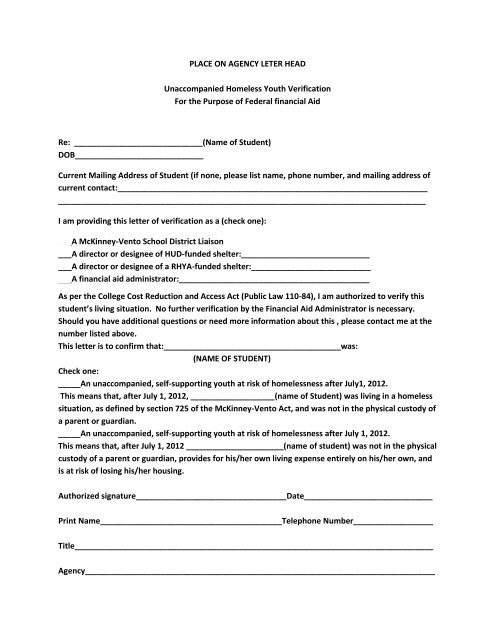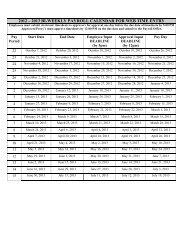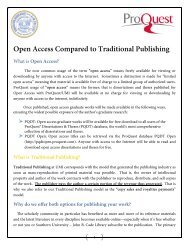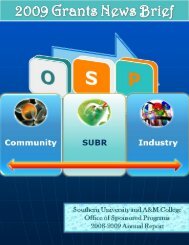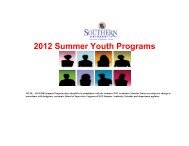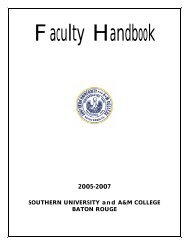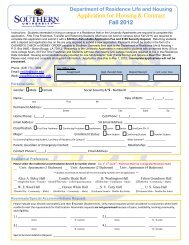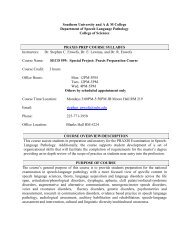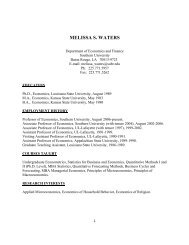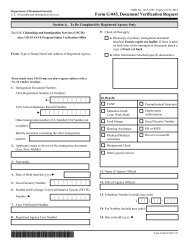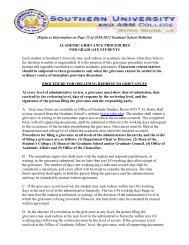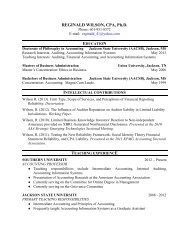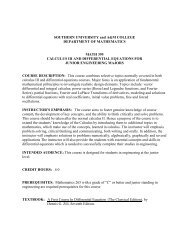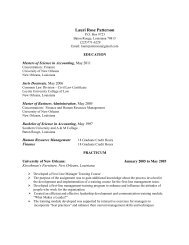Unaccompanied Homeless Youth Verification
Unaccompanied Homeless Youth Verification
Unaccompanied Homeless Youth Verification
Create successful ePaper yourself
Turn your PDF publications into a flip-book with our unique Google optimized e-Paper software.
PLACE ON AGENCY LETER HEAD<br />
<strong>Unaccompanied</strong> <strong>Homeless</strong> <strong>Youth</strong> <strong>Verification</strong><br />
For the Purpose of Federal financial Aid<br />
Re: _____________________________(Name of Student)<br />
DOB_____________________________<br />
Current Mailing Address of Student (if none, please list name, phone number, and mailing address of<br />
current contact:______________________________________________________________________<br />
___________________________________________________________________________________<br />
I am providing this letter of verification as a (check one):<br />
___A McKinney-Vento School District Liaison<br />
___A director or designee of HUD-funded shelter:_____________________________<br />
___A director or designee of a RHYA-funded shelter:___________________________<br />
___A financial aid administrator:___________________________________________<br />
As per the College Cost Reduction and Access Act (Public Law 110-84), I am authorized to verify this<br />
student’s living situation. No further verification by the Financial Aid Administrator is necessary.<br />
Should you have additional questions or need more information about this , please contact me at the<br />
number listed above.<br />
This letter is to confirm that:________________________________________was:<br />
(NAME OF STUDENT)<br />
Check one:<br />
_____An unaccompanied, self-supporting youth at risk of homelessness after July1, 2012.<br />
This means that, after July 1, 2012, ___________________(name of Student) was living in a homeless<br />
situation, as defined by section 725 of the McKinney-Vento Act, and was not in the physical custody of<br />
a parent or guardian.<br />
_____An unaccompanied, self-supporting youth at risk of homelessness after July 1, 2012.<br />
This means that, after July 1, 2012 ______________________(name of student) was not in the physical<br />
custody of a parent or guardian, provides for his/her own living expense entirely on his/her own, and<br />
is at risk of losing his/her housing.<br />
Authorized signature__________________________________Date_____________________________<br />
Print Name_________________________________________Telephone Number__________________<br />
Title_________________________________________________________________________________<br />
Agency_______________________________________________________________________________
Who are <strong>Unaccompanied</strong> <strong>Homeless</strong> <strong>Youth</strong>? <strong>Unaccompanied</strong> homeless youth are young people who<br />
lack safe, stable housing and who are not in the care of a parent or guardian. They may have run away<br />
from home or been forced to leave by their parents. <strong>Unaccompanied</strong> youth live in a variety of<br />
temporary situations, including shelters, the homes of friends or relatives, cars, campgrounds, public<br />
parks, abandoned buildings, motels, and bus or train stations.<br />
Between 1.6 and 1.7 million youth run away from their homes each year. Generally, youth leave home<br />
due to severe dysfunction in their families, including circumstances that put their safety and well-being<br />
at risk. Unfortunately, physical and sexual abuse in the home is common; studies of unaccompanied<br />
youth have found that 20 to 50% were sexually abused in their homes; while 40 to 60% were physically<br />
abused unaccompanied youth do not receive financial support from their parents and do not have<br />
access to parental information.<br />
Who are McKinney-Vento School District Liaisons? Under subtitle VII-B of the McKinney-Vento<br />
<strong>Homeless</strong> Assistance Act, every school district is required to designate a liaison for students<br />
experiencing homelessness. <strong>Homeless</strong> liaisons have a number of legal responsibilities under the Act,<br />
including identifying youth who meet the definition of homeless and are unaccompanied. The education<br />
subtitle of the McKinney-Vento Act is overseen by the U.S. Department of Education. For more<br />
information, see: http://www.ed.gov/programs/homeless/legislation.html<br />
What are HUD-funded Shelters? The U.S. Department of Housing and Urban Development (HUD)<br />
administers funding for homeless shelters and services under Title IV of the McKinney-Vento Act. These<br />
funds are distributed to communities through a competitive grant process. For more information, see:<br />
http://www.hud.gov/offices/cpd/homeless/programs/index.cfm<br />
What are RHYA-funded Shelters? The U.S. Department of Health and Human Services administers the<br />
Runaway and <strong>Homeless</strong> <strong>Youth</strong> Act programs. These programs provide funding for Basic Centers,<br />
Transitional Living Programs, and Street Outreach Programs that serve runaway and other<br />
unaccompanied homeless youth. For more information, see:<br />
http://www.acf.hhs.gov/programs/fysb/content/youthdivision/index.htm#sub1<br />
i Hammer, H., Finkelhor, D., & Sedlak, A. (2002). “Runaway / Thrownaway Children: National Estimates<br />
and Characteristics.” National Incidence Studies of Missing, Abducted, Runaway, and Thrownaway<br />
Children. Washington DC: Office of Juvenile Justice and Delinquency Prevention. See also Greene, J.<br />
(1995). “<strong>Youth</strong> with Runaway, Throwaway, and <strong>Homeless</strong> Experiences: Prevalence, Drug Use, and Other<br />
At-Risk Behaviors.” Research Triangle Institute. Washington DC: U.S. Dept. of Health and Human<br />
Services; National Runaway Switchboard, http://www.1800runaway.org/.<br />
ii Robertson, M. & Toro, P. (1999). “<strong>Homeless</strong> <strong>Youth</strong>: Research, Intervention, and Policy.” Practical<br />
Lessons: The 1998 National Symposium on <strong>Homeless</strong>ness Research. Washington DC: U.S. Dept. of<br />
Housing and Urban Development. Retrieved July 18, 2007 from<br />
http://aspe.os.dhhs.gov/progsys/homeless/symposium/3-<strong>Youth</strong>.htm. See also MacLean, M.G., Embry,<br />
L.E. & Cauce, A.M. (1999). “<strong>Homeless</strong> Adolescents’ Paths to Separation from Family: Comparison of<br />
Family Characteristics, Psychological Adjustment, and Victimization.” Journal of Community Psychology,<br />
27(2), 179-187


